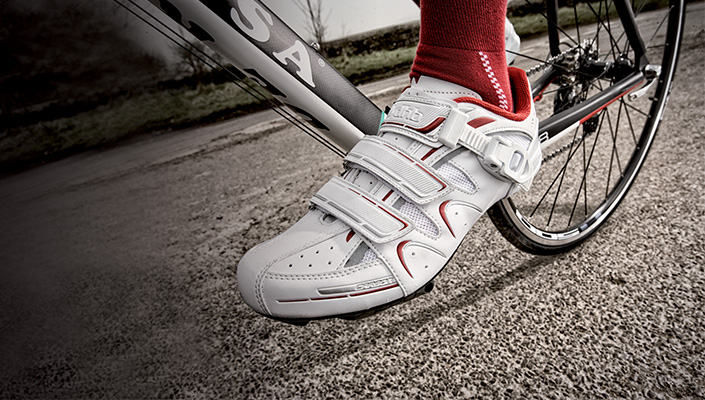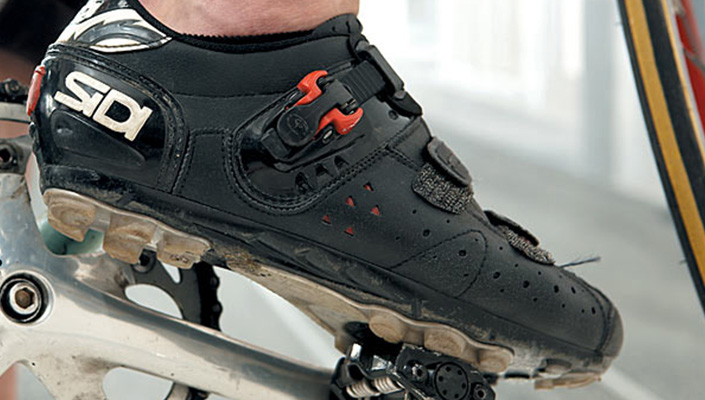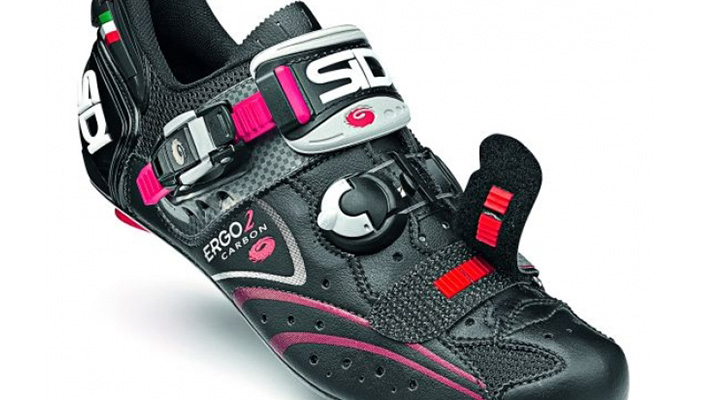
As is with anything in the cycling world buying shoes can be overcomplicated to the point of driving you to desperation. It's like buying normal shoes except your mates are chipping in with advice, the internet is telling you what to buy and your own partner is telling you what NOT to buy because you could be going on a holiday for that amount! Take it easy, and grab a seat. We've got this covered...
When you buy shoes for any form of cycling there are certain key points you should be aware of; but not in the sense of one shoe being better than the other. You need to find the shoe that is best for your needs in the same way we recommend for any other purchase in what is a very 'brand driven' buying market. We've split our advice into two segments: Road and mountain bike shoes respectively - each having different features to be aware of when making the final purchase.
MOUNTAIN BIKE SHOES

Made rough and ready, mountain bike shoes have very specific design requirements based on their use. As well as being performance orientated they also have to be strong and structurally able to offer foot protection (something road shoes don't need to do so much)
- MOULDING When you look at moulding of a shoe, take a quick look at the price tag as well. Cheaper shoes have a lower finish quality especially in how they fit your foot. If you feel foot support is important check the amount of foam padding within the shoes. A cheaper pair of shoes will have substantial amounts of foam to offer a broader range of fits. A high end pair of shoes, even marginally better in quality, will have more actual shoe shaping rather than foam. A higher quality shoe will offer more foot support, and ultimately a longer lifespan and added comfort.
- SOLE MATERIAL Some mountain bike shoes are made from plastic or vinyl, while others are formed from carbon fiber. Given that mountain bike shoes will be damaged by rocks etc, it's worth considering how much you value either given material. As the saying goes, "carbon makes no difference, until you try it". If you've never ridden carbon soles you're not losing out. But if you have ridden carbon, you'll know the feel is more direct, the pedaling stiffness is noticeably increased and the weight saved is enough to make you feel better about the added expense.
- STRAPS OR RATCHETS Possibly one of the most important points to consider is how the shoe will be staying on your foot. mountain bike shoes are exposed to a lot of sand, mud and water. All elements which reduce the effectiveness of velcro strapping. When buying new MTB shoes, find a pair that has the usual single ratchet on the top strap (that is, the strap closest to your leg as opposed to your toes) It doesn't matter if the other two straps are velcro, as these straps merely shape the shoe to your foot bridge. It's the final strap that holds the shoe on, and in saying so, it needs more force applied to achieve that. A ratchet system is a great way to fasten your shoes, seeing as the system is immune to mud and grit, and easily replaced upon breaking in a fall.
- TOE STUDS So many people throw the toe studs out when they take their new shoes home. Keep them! Fit them! Toe studs usually come in pairs, and are fitted to the very nose of your sole. The studs give added grip on what is a solid plastic shoe sole, offering minimal grip. When you run a bike uphill you do so predominantly on your toes which is where these studs are. Be careful walking on tiles inside your house as the studs (as well as your cleats) can cause damage.
- SHOE MATERIAL Some very high end mountain bike shoes are still made from leather. Try to avoid this material if you want a harty, yet affordably replaceable pair of shoes. Leather shoes fit like a glove, and feel amazing... But save them for your road bike, where you're less likely to take a tumble or scuff your shoes on rocks.
ROAD SHOES

Designed to be sleek, lightweight and comfortable - road shoes have similar features to mountain bike shoes although there are a few key points to focus on. All road shoes are compatible with road cycling cleats so make sure you choose the right brand and shape of cleat for your given pedals.
- MOULDING Similar to your mountain biking shoes, but a little more advanced... Some brands of road shoe offer heat moulding! Given you'll be riding in one position for hours on end, this is not a bad idea. Unlike mountain biking where you stand and sit frequently, road shoes require you to be comfortable in just one position for long periods of time. You can usually remould the shoe a handful of times, so you don't have to panic if you don't get it right the first time.
- SOLE MATERIAL Road shoes do require a little more stiffness than off-road shoes, purely because the rest of your bike is 100% performance based. Stiff wheels, stiff frame, but flexible shoes? If you want to cash in on the performance advancements of your bike we strongly suggest even some entry level carbon soled shoes. They're not much more expensive than their plastic counterparts, but worth every cent.
- HOW MANY STRAPS Road cycling shoes tend to offer a greater variety of strap numbers than their off-road counterparts. For instance, a triathlon shoe can easily be mistaken for a road shoe and only has one very large velcro strap. Other lower quality road shoes may only have two straps, but after riding in the rain and road grime, these straps can offer little shoe tension. Again we recommend opting for one ratchet strap, and two velcro straps (per shoe).
- REPLACEABLE HEEL GRIPS Given you may be moving slightly when you put a foot down at an intersection it is possible to grind away the heel of your shoe (by accident of course). Some shoes offer a replaceable external heel gripper because the shoes will outlast the grippers. This is a good option but not a crucial point in buying new shoes.
- BREATHABILITY Road shoes should always have good ventilation, to help keep you comfortable on a hot day. Check to see if your chosen shoes have sufficient ventilation netting, as well as holes cut into the sole of some shoes.

TIP: If your shoes do have actual holes in their soles, for ventilation purposes, you can place a strip of tape over these holes in winter. This keeps the cold and wet out of your shoes.
Happy shopping, and remember to always try before you buy. Comfortable shoes always lead to a good ride!



